Doctor of Medical Sciences Develops Multimedia to Increase Pregnant Women's Compliance in Triple Elimination Examination
Located in the Dr. A.A. Made Djelantik room, Faculty of Medicine Building, Udayana University, a Doctoral Promotion exam was held with the candidate for promovenda, Ni Komang Sulyastini, S.St., M.Pd., with the dissertation title "Development of Educational Media Using Multimedia Based on Theory of Planned Behavior for Pregnant Women in Conducting Triple Elimination Examination" (31/7/2024)
Triple elimination is a government program adopted from the World Health Organization program, namely an integrated effort to eliminate the transmission of HIV, syphilis, and hepatitis B from mother to child. This program aims to break the chain of transmission of the three diseases from mother to child during pregnancy, childbirth, or breastfeeding. Launched in 2017 through the Regulation of the Minister of Health No. 52 of 2017, this program is an important step in efforts to break the chain of transmission of these diseases during pregnancy, childbirth, or breastfeeding. The government has set a target to reduce the number of new cases of HIV, Syphilis and Hepatitis B infections in newborns with a benchmark of ≤50 cases per 100,000 live births. The coverage of pregnant women being tested for HIV, Syphilis and Hepatitis B is 100% and the Global Health Sector Strategy has set a target of Zero new infections among infants by 2030.
Although this program has been running, the coverage of triple elimination screening has not yet reached the expected target. There are still several districts with triple elimination coverage that does not meet the set target and there is still transmission of the three diseases from mothers to their babies. Several factors have been identified as the cause of the failure to achieve the coverage of triple elimination screening. One of the main factors is the lack of knowledge of pregnant women about triple elimination screening. In addition, other causes are the lack of information, knowledge, motivation and perception of mothers regarding triple elimination examinations, most of whom carry out triple elimination examinations in the 2nd trimester and there are still pregnant women who carry out examinations in the 3rd trimester, and the lack of educational media used to provide information related to triple elimination. The media used by health workers in providing information to pregnant women about triple elimination only uses the KIA book where in the KIA book information about triple elimination is very minimal.
One of the efforts that can be made to prevent transmission from mother to child is to conduct screening or early detection of the three diseases. In addition to early detection, other efforts that can be made are preventive efforts carried out with health promotion and health education about preventing HIV, Syphilis and Hepatitis B infections. Health promotion carried out includes providing accurate information to pregnant women. One technique that currently has good effectiveness is by providing health education using media using
multimedia. The use of multimedia in health education has shown effectiveness in increasing knowledge, self-efficacy, and health behavior change. Technology-based multimedia interventions are increasingly being applied to increase engagement, learning, and delivery of health interventions, showing better effectiveness in changing health behavior than non-technology approaches.
Educational media or educational media or learning media is anything that can be used as a tool in the process of delivering material to achieve learning objectives that can be in the form of hardware or software. The development of educational media needs to pay more attention to multimedia principles, such as increasing the variety and balance between writing, images, animations, and other visual elements. The use of relevant points and animations can help clarify the material and make the media more attractive to pregnant women. Multimedia (Cognitive Theory of Multimedia Learning) states that combining verbal and visual information can facilitate learning better than using only one mode. Effective educational media must meet the principles of good multimedia design, such as clarity, relevance, and ease of understanding the material. With clear and detailed presentation of the material, this educational media can help pregnant women understand important information about triple elimination better, in accordance with the principles of good multimedia design.
There was an increase in the average knowledge, attitude, subjective norm, perception of behavioral control and intention of pregnant women to undergo triple elimination examination before and after being given educational media with multimedia. The results of the analysis showed that there was a mean difference (mean difference) between the pretest and posttest for all variables (knowledge, attitude, subjective norm, perception of behavioral control, and intention) which indicated that the intervention or treatment given was effective in increasing knowledge, attitude, subjective norm, perception of behavioral control, and intention of pregnant women to undergo triple elimination examination.
Multimedia education intervention is described as an education program that uses more than one format to provide information, including a combination of written words, diagrams and/or images with audio, animation, or video. Research shows that multimedia education can provide benefits in changing behavior among pregnant women. By using multimedia, prevention information can be delivered in an interesting and easy-to-understand way. Strong visuals from videos and images can reinforce health messages and help pregnant women remember and apply prevention behavior better. multimedia education is more effective in improving knowledge, attitudes, and preventive practices in pregnant women compared to conventional methods such as booklets.
Subjective norms and attitudes are the factors that most influence pregnant women's intentions to undergo triple elimination examinations. Of the four factors studied, the most influential factor is subjective norms, which have a very strong positive impact. This means that a person's perception of what other people who are important to them think greatly influences the behavior or outcomes observed. Any increase in subjective norms tends to result in a significant increase in the measured outcomes. The second factor that has a significant influence is attitude. Although its influence is not as strong as subjective norms, attitudes still have a significant positive impact. This shows that the way a person views or assesses something also contributes to the final outcome observed.
On the other hand, knowledge and perceived behavioral control do not show a significant influence in this model. Although perceived behavioral control has a larger positive coefficient than knowledge, its influence is not strong enough to be considered statistically significant. Knowledge even has a very small influence, but this influence is also not significant. Overall, these findings suggest that in the context studied, social factors (subjective norms) and internal factors (attitudes) play a more important role than knowledge or perceptions of the ability to control behavior.
This examination was led by the Dean of FK Unud, Prof. Dr. dr. Komang Januartha Putra Pinatih, M.Kes., with the testing team:
1. Prof. dr. I Made Ady Wirawan, S.Ked, MPH., Ph.D (Promoter)
2. Dr. dr. A.A. Ngurah Jaya Kusuma, Sp.OG, Subsp.K.Fm,MARS (Copromotor I)
3. Dr. Luh Seri Ani, SKM.,M.Kes (Co-Promotor II)
4. Prof. Dr. dr. I Made Jawi, M.Kes
5. Prof. Dr. dr. I Wayan Weta, MS.,Sp.GK
6. Prof. Dr. dr. I Wayan Putu Sutirta Yasa, M.Si
7. Prof. dr. Pande Putu Januraga, M.Kes., Dr,PH
8. Prof. Dr. Ketut Agustini, S.Si.,M.Si
9. Dr. Ni Ketut Sutiari, SKM.,M.Si
10. dr. Made Winarsa Ruma, S.Ced., Ph.D
While the academic invitations are:
1. Dr. Luh Putu Widiastini, S.Si.T., M.Kes
2. Dr. I Putu Suiraoka,SST.,M.Kes
3. Dr. Kadek Tresna Adhi, SKM.,M.Kes
4. Dr. Luh Nik Armini, S.ST.,M.Keb
5. Dr. Bdn. Gusti Ayu Martha Winingsih, SST.,MM.,M.Kes
On this exam, Dr. Ni Komang Sulyastini, S.St., M.Pd, was declared graduate as the 434th Graduate Doctoral Degree of the Doctor of Medical Sciences Program of the Faculty of Medicine, Udayana University with the predicate CUMLAUDE.
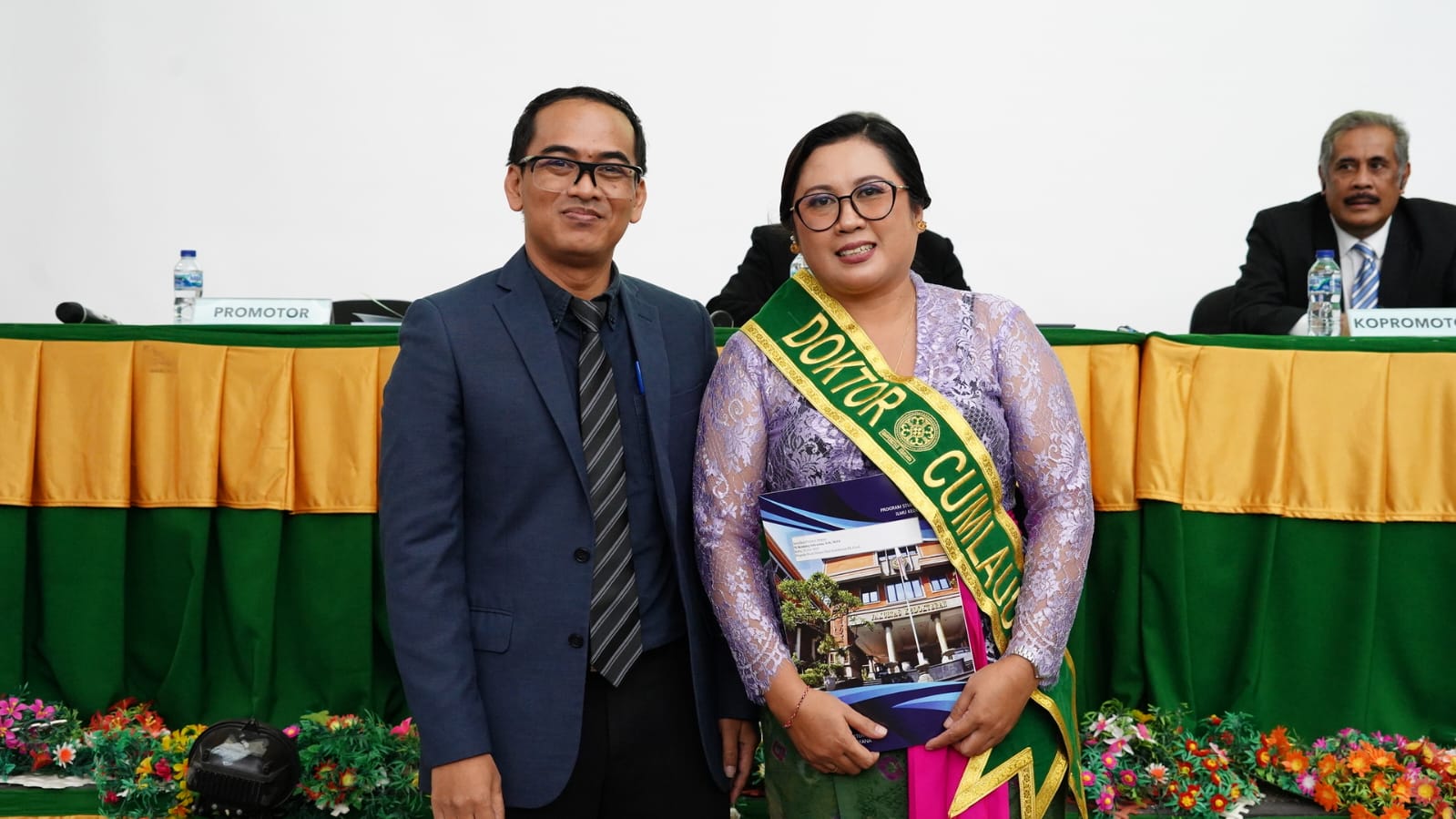

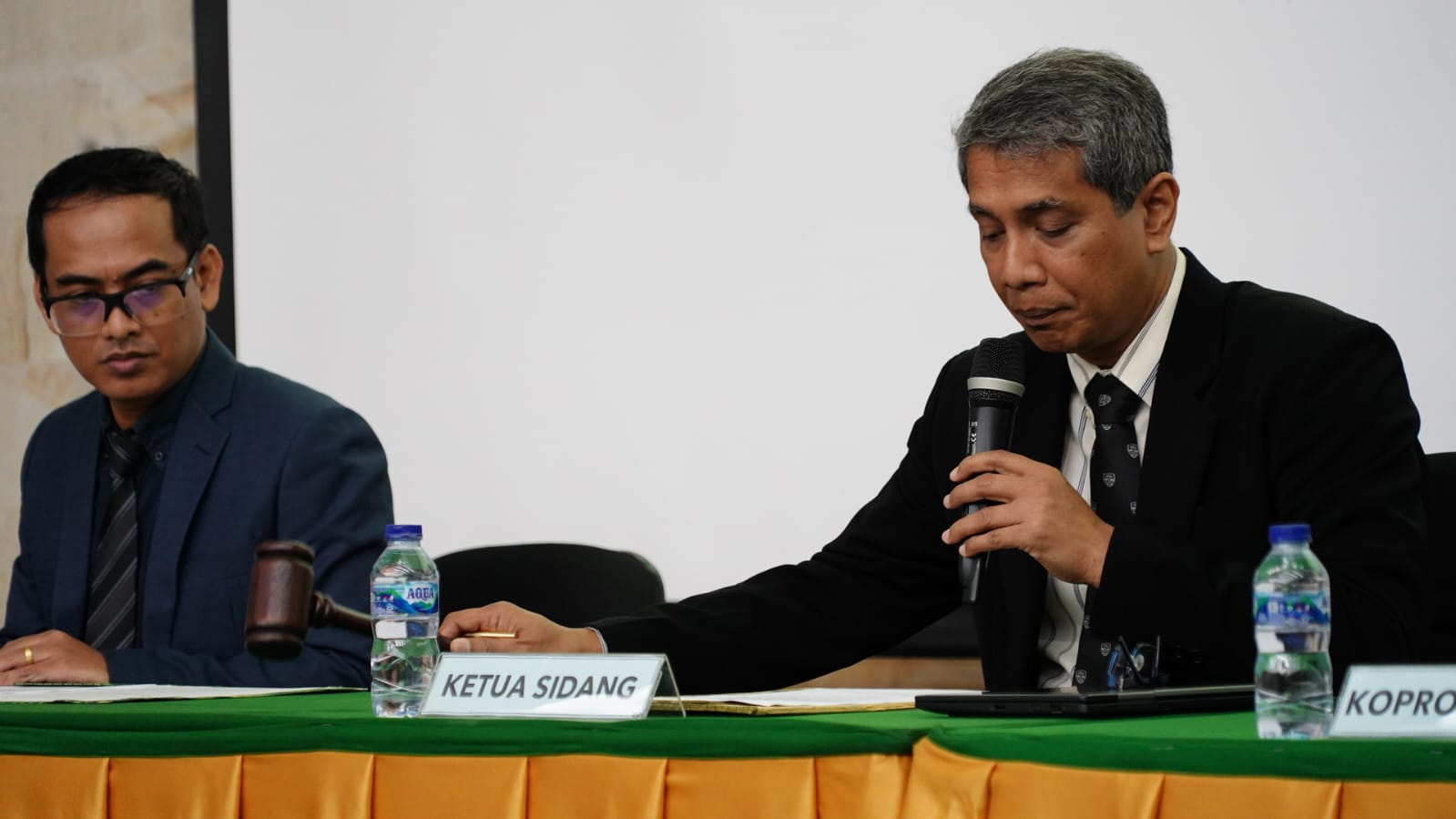

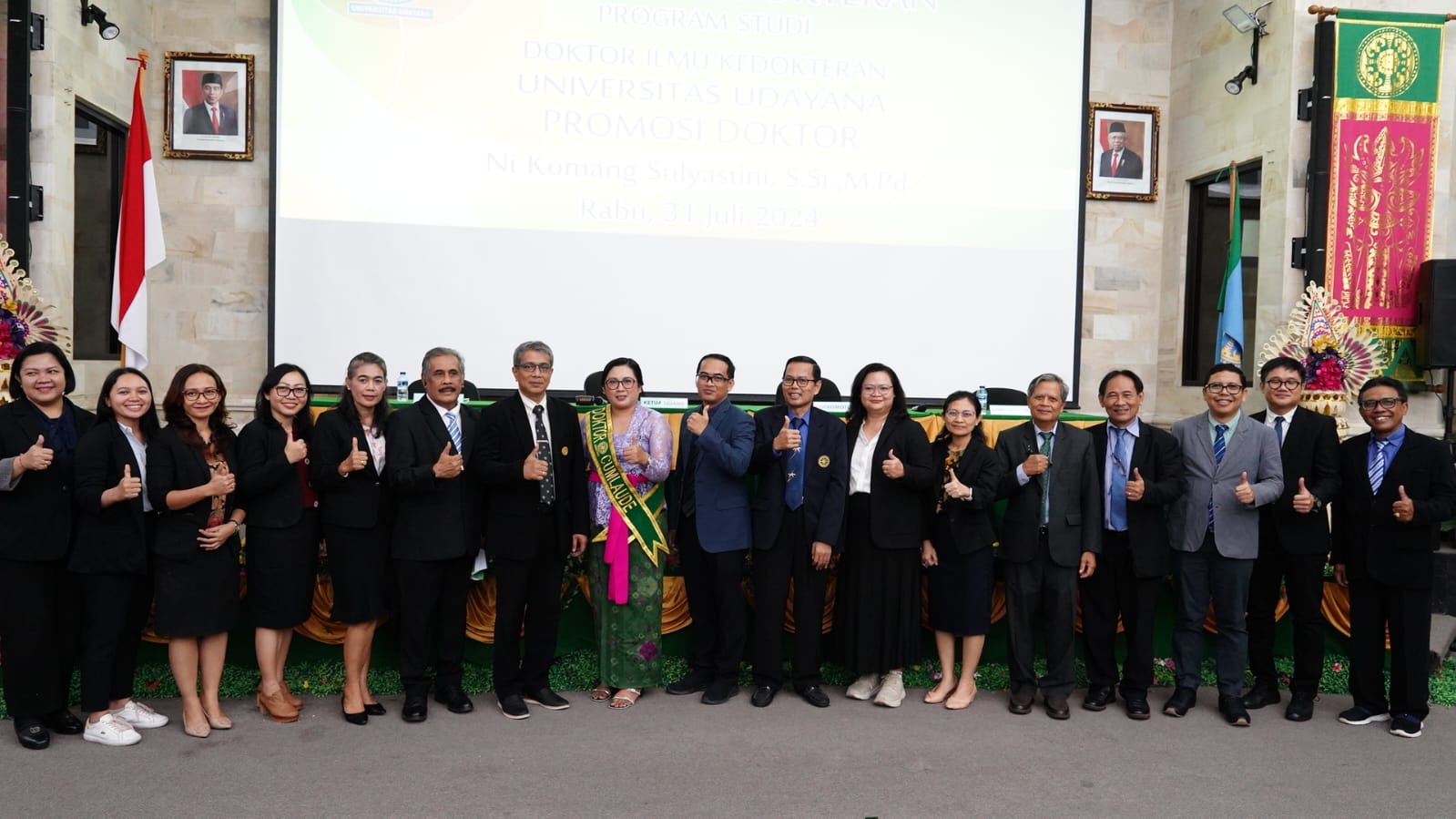
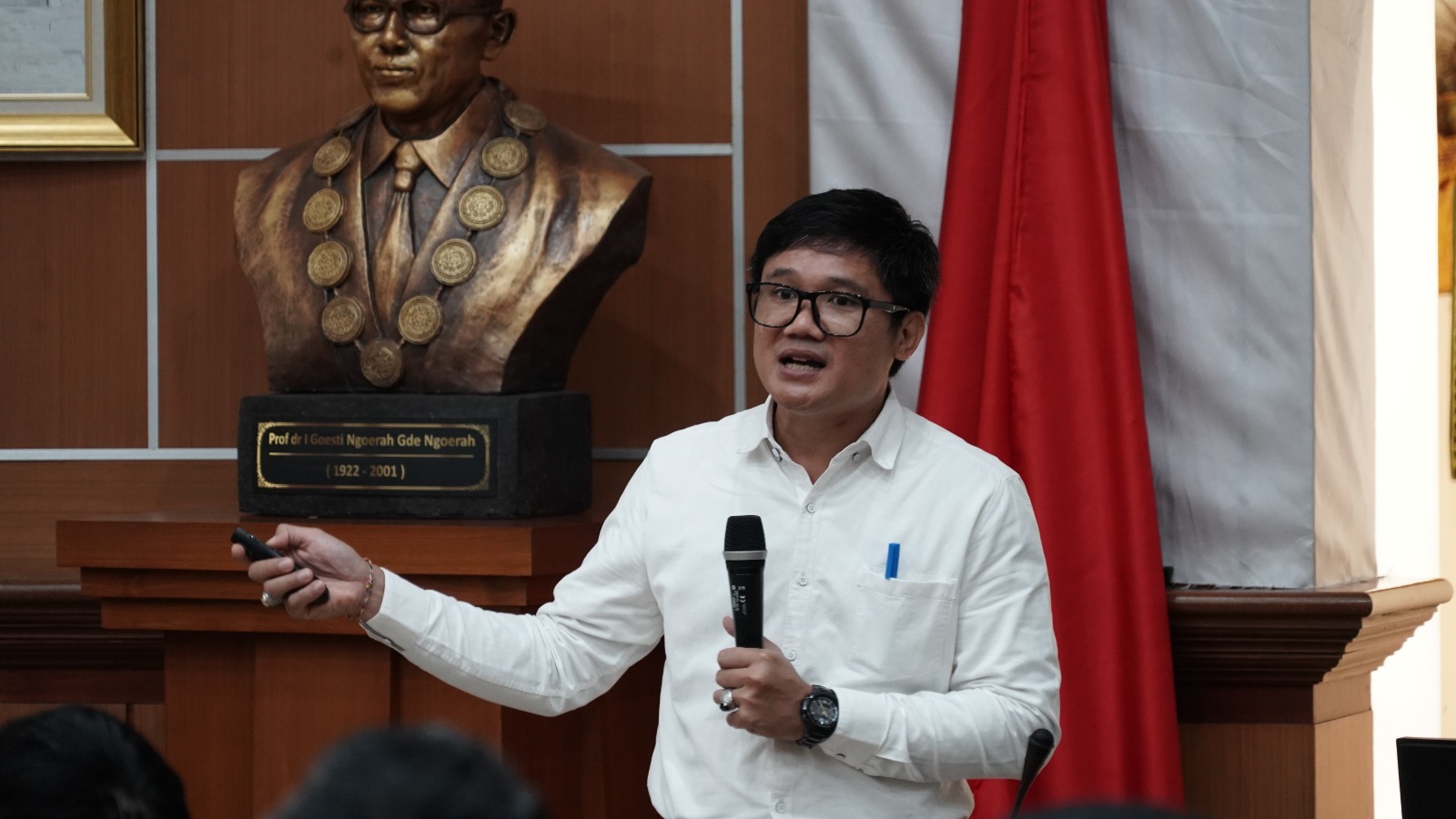
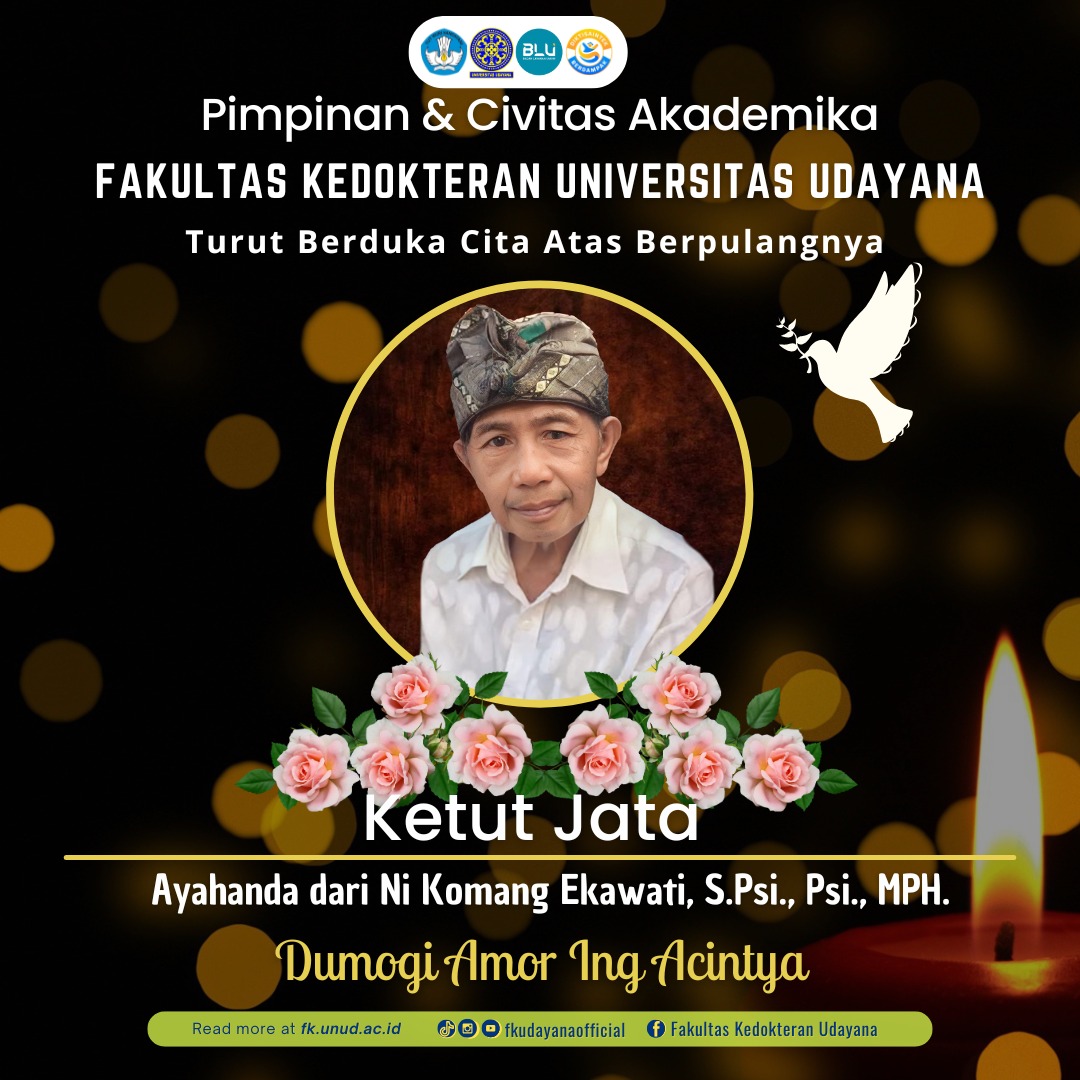
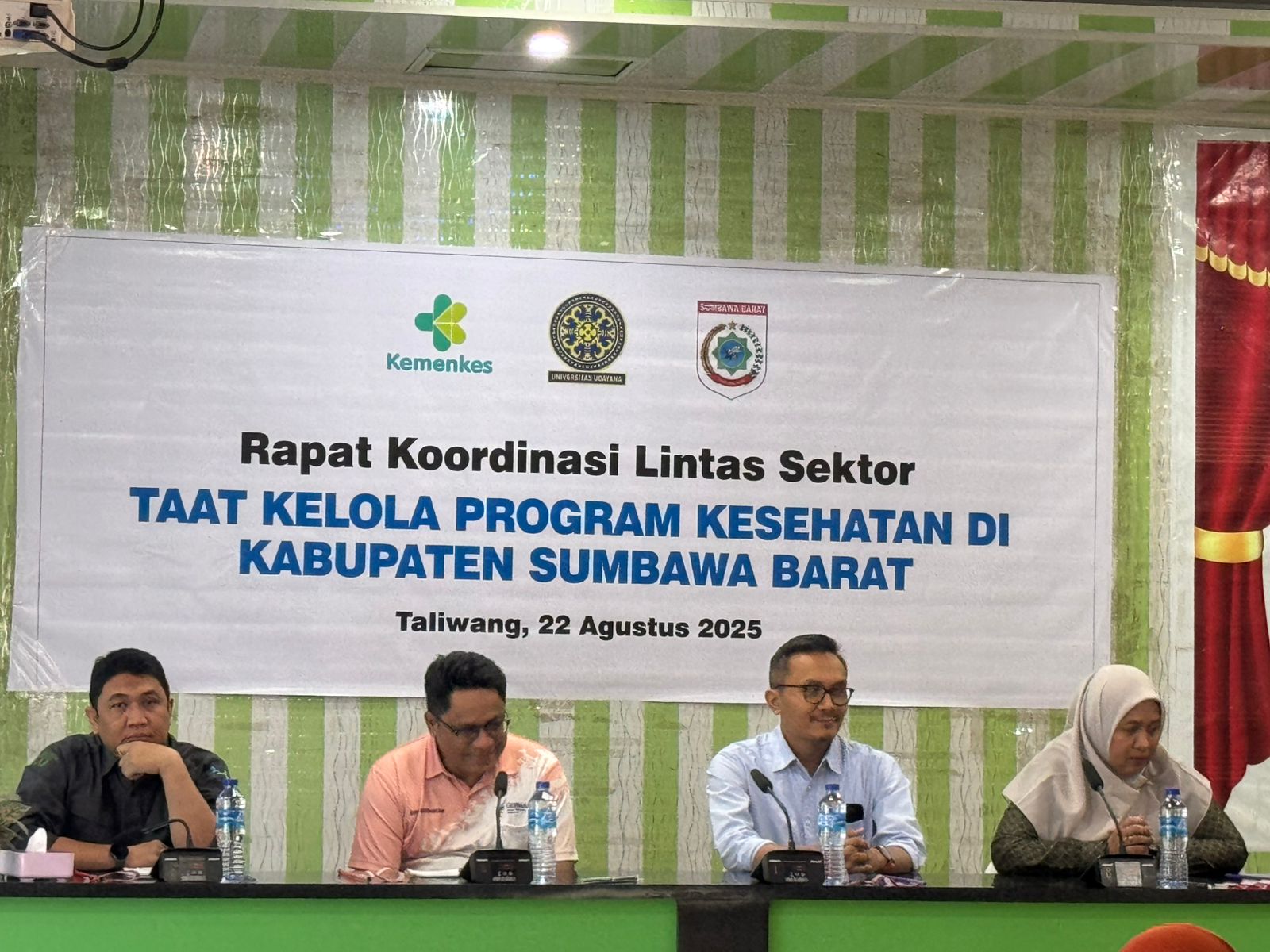
UDAYANA UNIVERSITY